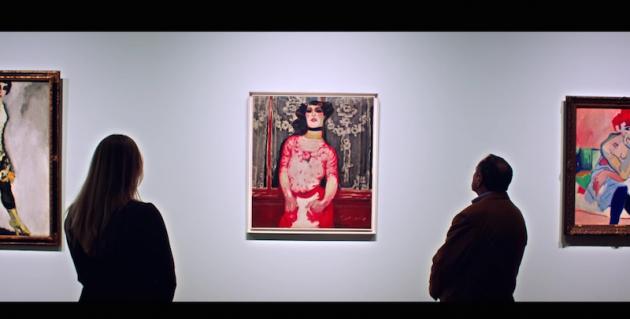The Van Gogh Museum in Amsterdam is presenting a groundbreaking exhibition organised in collaboration with Musée d’Orsay about the visual presentation of prostitution in French art from the years between 1850 and 1910. It is a theme that has never before been presented in an exhibition on such a large scale. Visitors can admire more than 100 paintings and works on paper by important artists such as Degas, Toulouse-Lautrec, Van Gogh and Picasso. The exhibition will also include some unusual objects, such as an extravagant 19th-century bed. In Paris, this much-talked-about exhibition is presently considered as the absolute must-see of the season.
During the second half of the 19th century, prostitution was a favourite subject of the visual arts. Artists enthusiastically depicted prostitution as an aspect of modern life in the city of Paris and they painted women soliciting on the boulevards, wealthy courtesans in their salons and the prematurely aged prostitutes in brothels. The theme was relevant because of the many social discussions about the dangers of prostitution and the pros and cons of regulating it. Easy Virtue, in the Van Gogh Museum from 19 February to 19 June, shows why this stimulating, yet at the same time complex and controversial subject appealed to artists.
The exhibition will include a large number of impressive and famous masterpieces by artists such as Manet, Degas, Toulouse-Lautrec, Picasso and Van Gogh (loans from international museums and private collections), completed with intriguing and unusual objects, as, for instance, a 19th-century police register with photos of convicted prostitutes. Visitors to this exhibition will enter the dance halls and cafés where women picked up their customers, as well as the hidden world of brothels and prisons where illegal prostitutes and women with venereal diseases were locked up.
Courtesans ranked highest among the prostitutes. They were the stars of the haute prostitution and showed off their social successes by having their portraits painted, sculpted or photographed and distributing their photos everywhere. The most famous one was La Païva (1819-1884). Born Hélène Lachmann, she was a poor Jewish girl from Moscow who came to Paris and managed to become the most successful courtesan of the 19th century. She was famous for the parties and dinners that she organised for the beau monde in Paris; politicians, nobility and famous writers, such as Gustave Flaubert and Emile Zola, were her regular guests. Her opulent mansion at the Champs-Élysées in Paris, with its silver taps (which spouted both water and champagne), is still open to visitors. A few pieces of furniture from this house will be on view in the Easy Virtue exhibition. It will also include a 19th century bed, decorated with a painting of Leda and the swan, and sculptures of angels, which was probably owned by a courtesan or featured in one of the many brothels of Paris.
Easy Virtue. Prostitution in French Art, 1850-1910 is a collaboration between the Van Gogh Museum in Amsterdam and Musée d’Orsay in Paris will be open in the Van Gogh Museum from 19 February to 19 June

